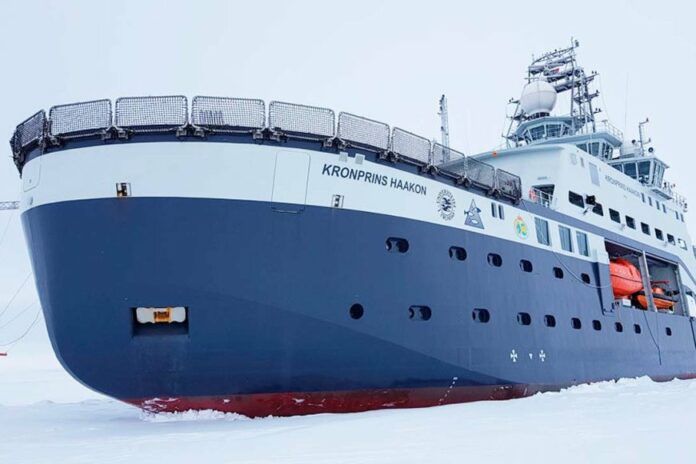“A sulphide sample was collected during an expedition along the Knipovich Ridge in December 2024. Further mapping of the area was conducted in March of this year, and we are now certain that we’ve discovered a new sulphide deposit,” says Hilde Braut, Assistent director of the new industries in the Norwegian Offshore Directorate.
Both expeditions were carried out by the RV Kronprins Haakon research vessel. The expedition that collected the sulphide sample was conducted on scientific survey licence 905/2024. The expedition that confirmed the “Gygra” sulphide deposit is part of scientific survey licence 911/2025.
Data collected by the Norwegian Offshore Directorate in previous surveys formed the basis for the survey of these selected areas.
The objective of the surveys was to acquire additional knowledge about the deep sea, and data concerning both geology and the environment was collected.
The inactive sulphide deposit known as “Gygra” was discovered as part of a broader survey in the area surrounding the previously proven “Jøtul” sulphide deposit. “Gygra” is located just over a kilometre southeast of “Jøtul”.
The “Gygra” deposit is situated at 2800 metres below sea level.
Geological samples were taken from “Gygra” in both expeditions, using the remotely operated vehicle (ROV) Ægir 6000.
On the discovery expedition, a sample was collected using a grab sampler. On the delineation expedition, 53 samples were collected using the grab sampler. All sampling has been documented by video of HD quality or better.
To date, the collected material has only been analysed using handheld XRF (x-ray fluorescence) on board the ship. These analyses indicate that the material contains between 2 and 30 per cent copper. The presence of the mineral atacamite confirms a high content of copper.



